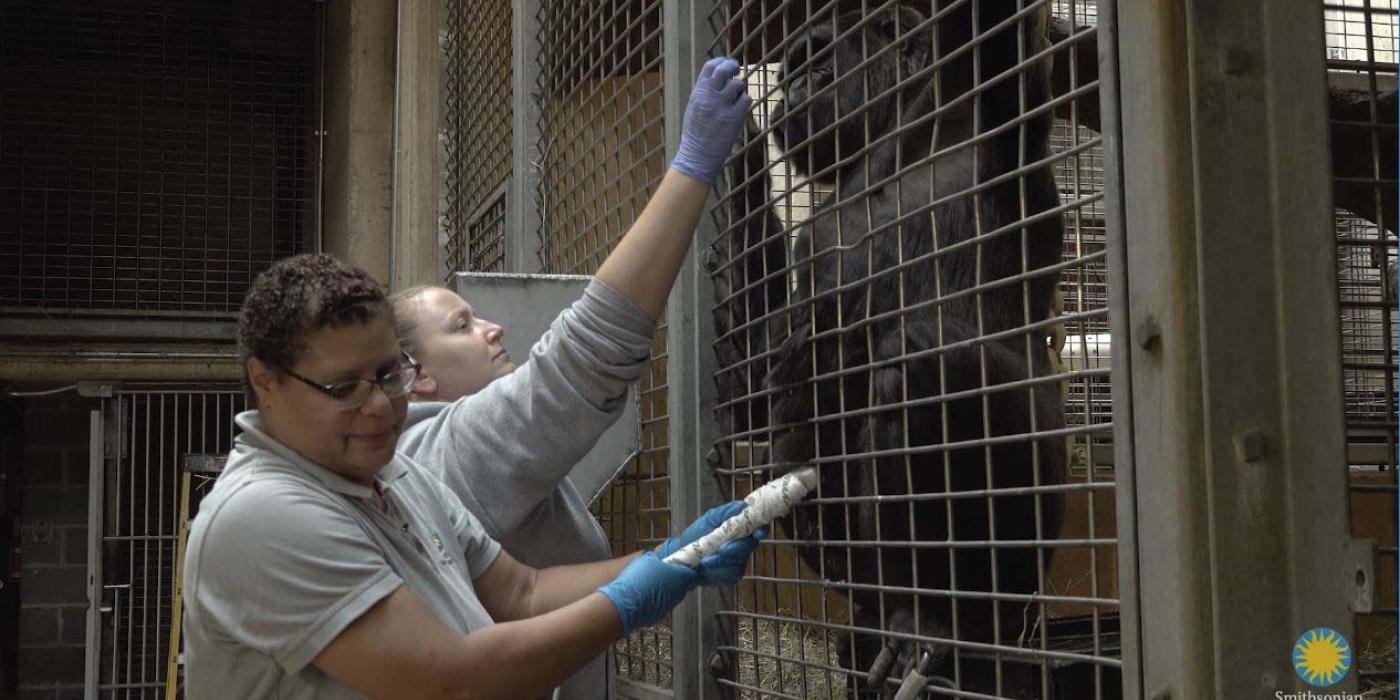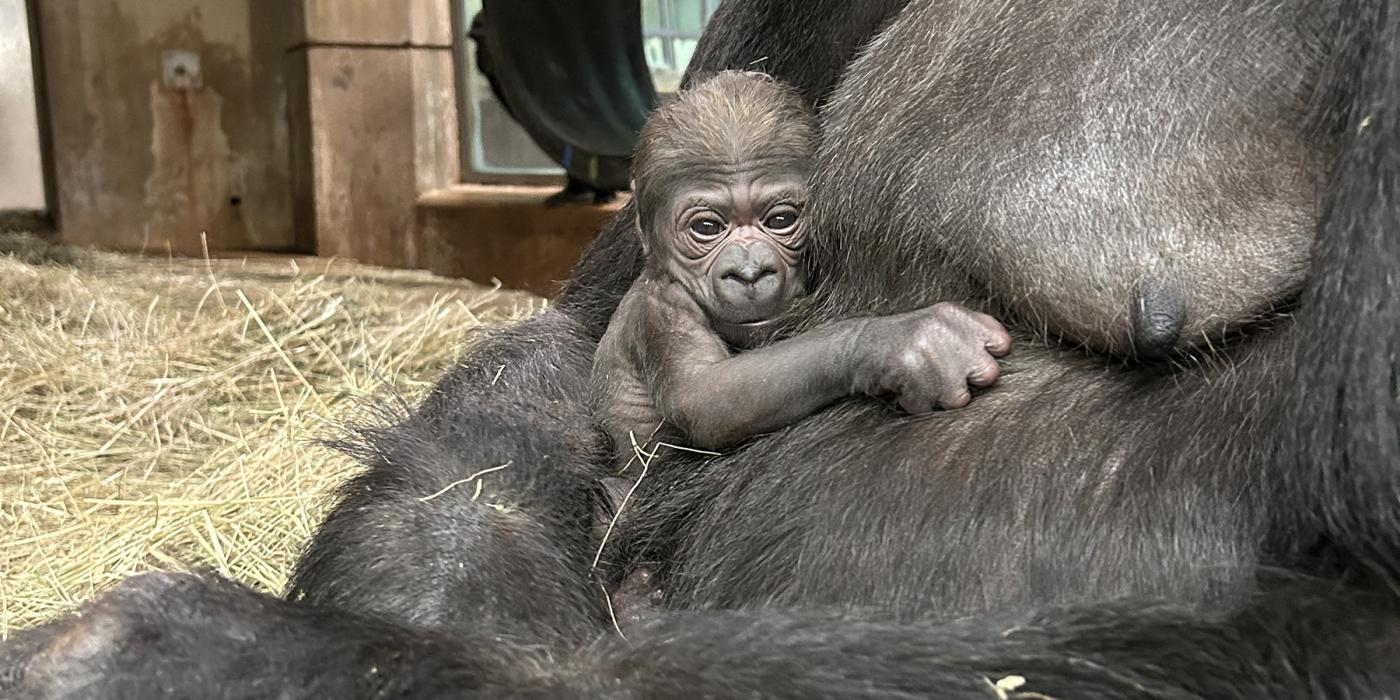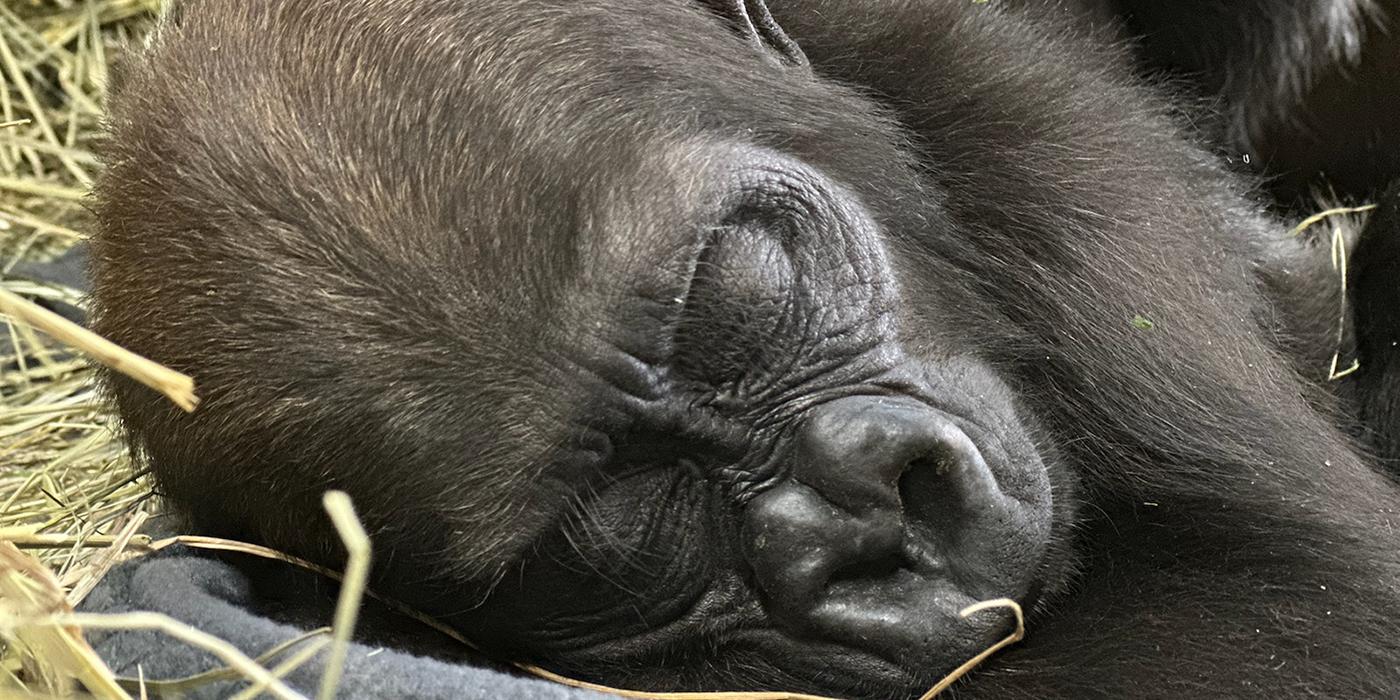#GorillaStory: Ultrasound Training with Calaya
From giant pandas to gray seals, mammal moms-to-be at the Smithsonian’s National Zoo are trained to participate voluntarily in ultrasounds. These sessions provide animal keepers and veterinarians the opportunity to monitor fetal health and development in real time. Primate keeper Melba Brown trained the Zoo’s pregnant western lowland gorilla, Calaya, to participate in this important rite of passage.
At first, Calaya was a bit reluctant to interact with the ultrasound probe. It took time and patience for her to be comfortable with the machine and the various attachments that go along with it. Now, Calaya is a “pro” at the training, according to Brown.
“Calaya’s ultrasound training began with a simple behavior," Brown said. "I would ask her to present her belly at the mesh, and reward her with a treat. She quickly achieved this step! Next, I wanted her to get accustomed to the feel of the ultrasound probe, so I used a small piece of plastic tubing to mimic the sensation of the probe. Because Calaya learns best from watching others, I touched my own abdomen with the tubing to let her see that it was ok. From there, she let me touch the tubing to her abdomen and, ultimately, the training probe.”
A trusting relationship between a keeper and the animals in his or her care is the key to a successful training session. Animal keepers throughout the Zoo use positive reinforcement training, which means that when the animals do a behavior asked of them, they receive a reward in the form of verbal praise, food or both.
“As Calaya became more comfortable around the ultrasound equipment, I extended the length of time that the probe was in contact with her abdomen," said Brown. "Eventually, she allowed me to move the probe around while making contact. The final step was to introduce the ultrasound gel. Calaya moved though each step quickly. Each time, I heaped copious praise on her, and she received lots of grapes for doing such a good job.”
Training an animal to sit still for an ultrasound has its challenges. While Brown does this training daily for a few minutes at a time, the actual ultrasound occurs once a week and lasts anywhere from 20 minutes to one hour. To make it worth Calaya’s while, keepers offer her everyday treats (nuts and grapes) as well as treats that are considered big rewards, like strawberries and frozen peaches. As Calaya’s pregnancy progresses, keepers and veterinarians continue to monitor fetal growth, heartbeat and movements.
“The first time we were able to see the fetus on the monitor in November, it was incredible!" said Brown. "We could see a side view of the body, and he or she was moving around more than I expected. Now, its body is much larger, but it is still quite active and moves its arms and legs about. We also have a better view of the head, spinal column and rib cage. The heartbeat is strong. The details are just amazing.”
Follow the Zoo’s updates throughout Calaya’s pregnancy on Facebook, Twitter and Instagram with the hashtag #gorillastory.Related Species:




